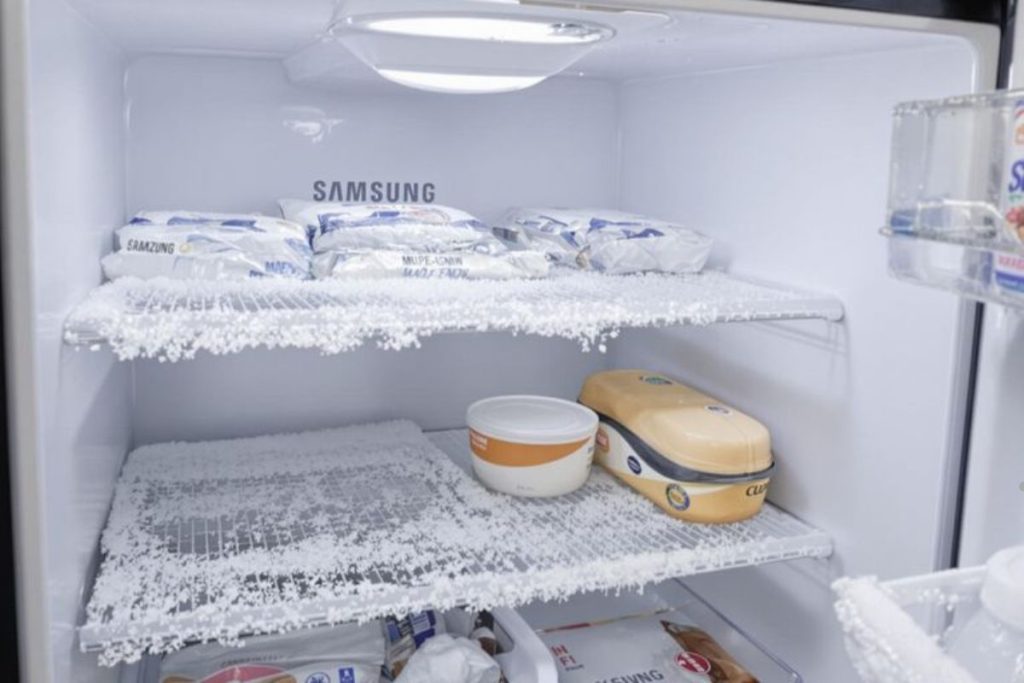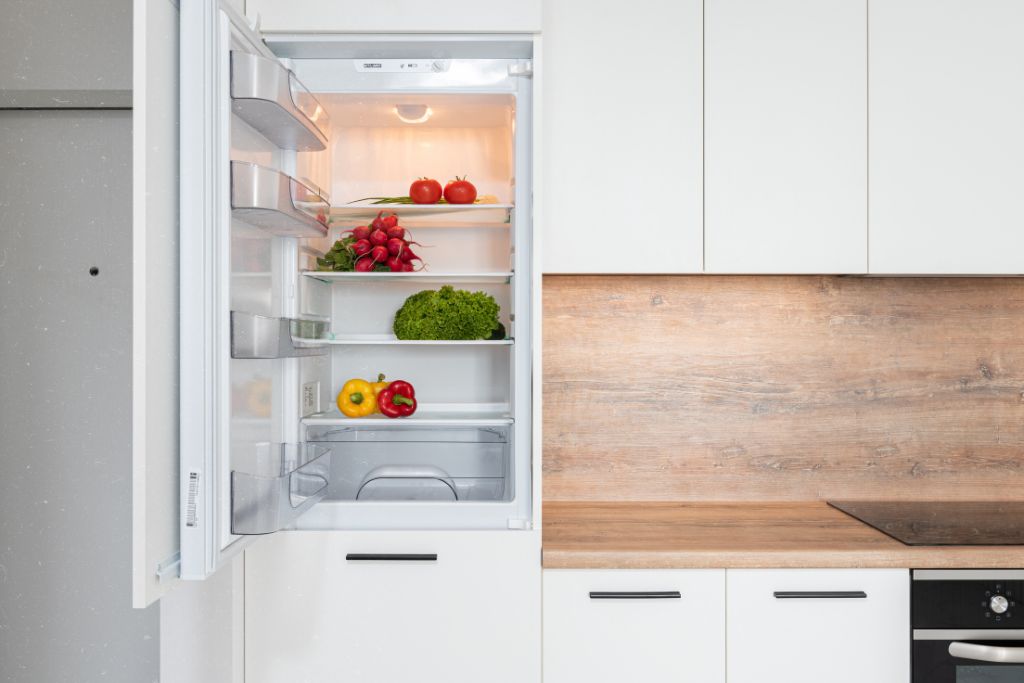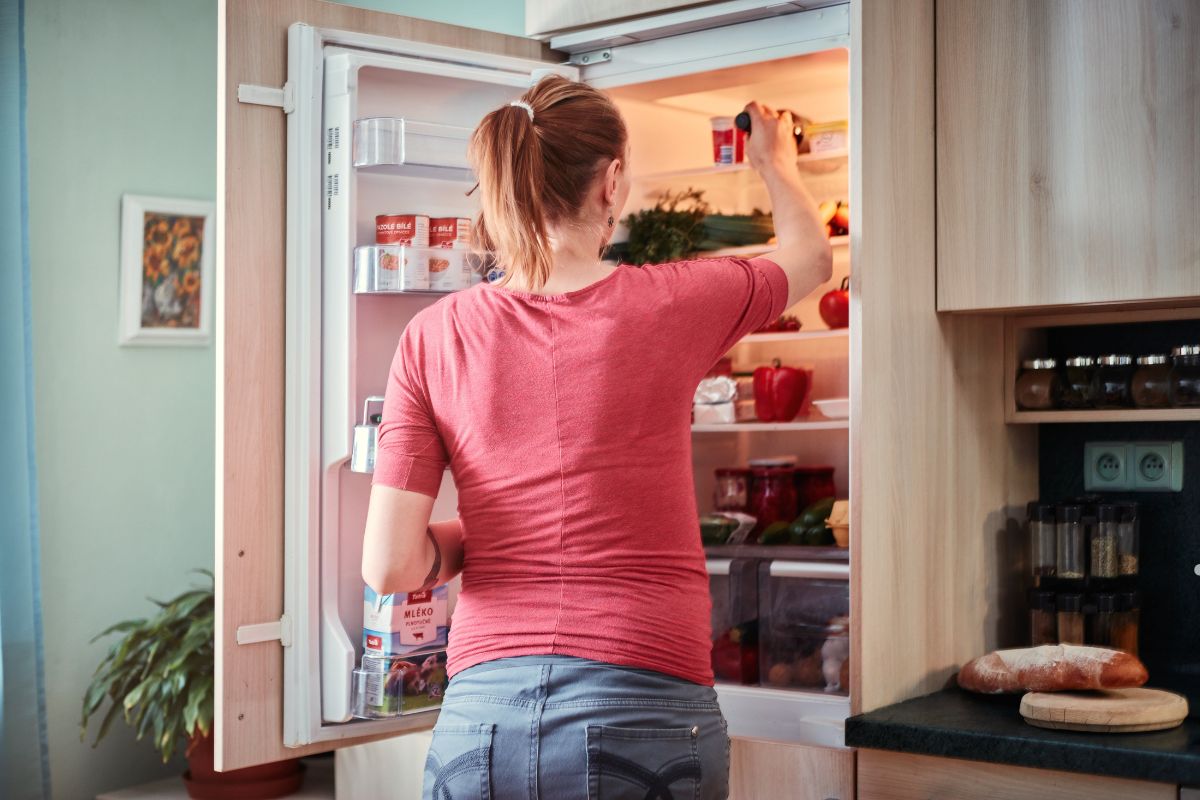
Ever opened your fridge, only to find your lettuce frozen solid or your milk turning into a slushy mess? If you’re in Spokane and dealing with a Samsung fridge that’s freezing your food, you’re not alone. There are a bunch of reasons this could be happening, but the good news is, most of them are fixable. Let’s break down the top 7 reasons why your Samsung fridge is freezing food and what you can do about it.
Key Takeaways
- A faulty thermostat can mess up the temperature, so check it and adjust if needed.
- Blocked air vents might be stopping proper airflow—clear them out.
- Setting the fridge temperature too low is a common mistake; aim for the right range.
- Damaged door seals let cold air escape, causing freezing in other areas.
- Overloading the fridge can block vents and mess with cooling—organize it better.
Common Thermostat Issues in Samsung Fridges
How to Identify a Faulty Thermostat
A thermostat that isn’t working properly can throw off your fridge’s cooling system entirely. One of the most obvious signs is inconsistent cooling—you might notice frozen lettuce one day and lukewarm milk the next. Another clue? Odd noises coming from the fridge, which might indicate the thermostat is struggling to regulate temperature. If you suspect the thermostat, use a multimeter to test its continuity. No continuity? That’s a red flag that it’s time for a replacement.
Steps to Adjust the Thermostat Settings
Adjusting your thermostat is pretty straightforward, but it’s worth doing it right to avoid further issues:
- Locate the thermostat dial, usually found inside the fridge near the back or side walls.
- Turn the dial to a middle setting (typically marked as “3” or “medium”).
- Give the fridge about 24 hours to stabilize at the new setting.
- Use a thermometer to check if the internal temperature is between 37°F and 40°F.
If the fridge is still freezing food after these steps, the thermostat might need a deeper inspection.
Experiencing temperature problems due to thermostat issues? Give us a call today for professional diagnostics and reliable repair solutions!
A faulty thermostat in your Samsung fridge can lead to temperature inconsistencies, affecting food quality and energy efficiency. Identifying and addressing thermostat issues early can help prevent bigger problems. Regular maintenance and timely repairs are essential to keeping commercial appliances, including refrigerators, running efficiently. Whether it’s a fridge, oven, or dishwasher, professional repair services can help prevent costly breakdowns. Learn more about troubleshooting and expert solutions in our guide on Commercial Appliances Repair Services.
When to Replace the Thermostat
Sometimes, no amount of tweaking will fix a faulty thermostat. Here’s when you know it’s time for a replacement:
- The fridge isn’t responding to temperature adjustments.
- Food is consistently freezing or spoiling, regardless of settings.
- The thermostat shows no continuity when tested with a multimeter.
Replacing a thermostat isn’t overly complicated, but if you’re unsure, it’s better to call a professional. After all, a properly functioning thermostat is key to avoiding cooling problems in Samsung refrigerators.
A faulty thermostat might seem like a small issue, but it can lead to bigger headaches—like spoiled food or skyrocketing energy bills. Addressing it early can save you time and money in the long run.
Blocked Air Vents and Their Impact on Cooling

Signs of Blocked Air Vents
Sometimes, your fridge might not cool the way it should, or worse, it might freeze everything inside. One common culprit? Blocked air vents. When air can’t flow freely, it disrupts the cooling process. Signs to look out for include uneven cooling, frost buildup near the vents, or a fridge that’s constantly running but not maintaining the right temperature. If you notice these issues, it’s time to check the vents.
How to Clear Obstructions in Air Vents
Clearing blocked vents isn’t as tricky as it sounds. Follow these steps to get your fridge back in shape:
- Turn off the fridge: Safety first—unplug the fridge before you start any cleaning.
- Inspect the vents: Look for food particles, ice, or other debris that might be clogging the airflow.
- Remove obstructions: Use a soft cloth, warm water, and mild soap to gently clean the vents. Avoid using sharp tools that could damage them.
- Let it dry: Make sure everything is completely dry before plugging the fridge back in.
Taking the time to clear the vents ensures your fridge runs efficiently and prevents future freezing issues.
Preventing Future Blockages
Blocked vents can be a recurring problem if steps aren’t taken to prevent them. Here’s what you can do:
- Don’t overpack the fridge: Leave enough space around the vents for air to circulate.
- Regularly check for obstructions: Make it a habit to inspect the vents during routine cleaning.
- Keep the fridge at the right temperature: This helps avoid frost buildup that could block the vents.
A little maintenance goes a long way in keeping your Samsung fridge running smoothly. Ignoring blocked vents can lead to bigger problems, like spoiled food or skyrocketing energy bills. Take a few minutes to check those vents and save yourself the hassle later.
If you’re dealing with blocked vents in your Samsung freezer, it’s essential to address the issue promptly. Learn more about cleaning and maintaining Samsung freezer vents to keep your appliance in top condition.
Incorrect Temperature Settings in Your Fridge
Understanding Optimal Temperature Ranges
Setting the right temperature in your fridge is more than just a preference—it’s about keeping your food fresh and safe. The ideal temperature for a fridge is typically between 35°F and 38°F. Anything colder and you risk freezing your food; warmer and food spoilage becomes a concern. For freezers, aim for 0°F.
Here’s a quick reference:
| Appliance | Temperature Range |
| Refrigerator | 35°F to 38°F |
| Freezer | 0°F |
If your fridge isn’t holding these ranges, it might be time to check the settings.
How to Reset Temperature Controls
- Locate the temperature control panel. It’s often inside the fridge, near the top or back.
- Adjust the settings to the recommended range—usually, a digital display or a dial will let you do this.
- Give it some time. It can take up to 24 hours for the fridge to stabilize at the new temperature.
If resetting doesn’t help, consider unplugging the appliance for a few minutes and plugging it back in. Ensure the appliance is properly plugged in after any adjustments.
Common Mistakes in Setting Temperatures
- Over-adjusting: Turning the dial too low because you think colder is better can lead to freezing issues.
- Ignoring the manual: Each fridge model is a bit different, so always check the manual for specific instructions.
- Forgetting to check after power outages: A power surge might reset your fridge’s settings, throwing off the balance.
Small adjustments can make a big difference. Don’t overlook the importance of maintaining proper fridge temperatures—it saves food and energy.
Faulty Door Seals and Their Role in Freezing
How to Inspect Door Seals for Damage
A faulty door seal might seem like a minor issue, but it can cause big problems in your fridge. When the seal isn’t doing its job, cold air escapes, and the fridge compensates by overcooling. To check the seals, run your fingers along the edges of the door. Do you feel any cracks or gaps? Another trick is the paper test—place a piece of paper between the door and the fridge. If you can pull it out easily, the seal isn’t tight. This simple test can save you from bigger headaches later.
Steps to Replace a Damaged Door Seal
Replacing a damaged seal isn’t hard, but it does take some patience. Here’s how to do it:
- Buy the right seal: Make sure it’s compatible with your Samsung fridge model.
- Remove the old seal: Gently pull it off, starting from one corner.
- Clean the groove: Use a damp cloth to wipe away any dirt or residue.
- Install the new seal: Line it up and press it into the groove, working your way around the door.
- Test the seal: Use the paper test again to make sure it’s snug.
If this seems like too much, you might want to call a professional to handle it.
Tips to Maintain Door Seal Integrity
Keeping the door seals in good shape is easier than you think. Here are a few tips:
- Clean regularly: Wipe the seals with a damp cloth to remove dirt and debris.
- Avoid slamming the door: This can weaken the seal over time.
- Check periodically: Inspect the seals for wear and tear every few months.
A well-maintained door seal not only prevents freezing issues but also helps your fridge run more efficiently, saving energy and money.
If you notice frost or ice buildup around the door, it might be time to ensure the freezer door closes completely and the seals are clean and properly attached.
Overloading Your Fridge and Its Consequences

Why Overloading Causes Freezing Issues
When you cram too much stuff into your fridge, it messes with the airflow. Proper air circulation is critical for keeping your fridge at the right temperature. Without it, cold air can get trapped in certain spots, causing some areas (and your food) to freeze. Overloaded fridges also make the compressor work harder, which can lead to uneven cooling and other problems down the line.
How to Organize Items in Your Fridge
Keeping your fridge organized isn’t just about aesthetics—it’s about functionality. Here’s how you can do it:
- Don’t block the vents. Make sure there’s space around them so air can flow freely.
- Use the shelves and drawers as intended. For example, store fruits and veggies in the crisper and dairy on the middle shelves.
- Avoid stacking items too high. Leave some space between items for better airflow.
A little effort in arranging your fridge goes a long way in preventing freezing issues.
Best Practices to Avoid Overloading
To keep your fridge running smoothly, follow these tips:
- Regularly check for expired or unused items and toss them. This frees up space.
- Stick to a grocery plan. Only buy what you need for the week to avoid overstocking.
- If you have a lot of food to store, consider using a secondary fridge or freezer.
Overloading your fridge might seem harmless, but it can lead to big headaches like frozen food, higher energy bills, and even costly repairs. Keeping things balanced and organized helps your fridge work as it should.
Malfunctioning Sensors in Samsung Refrigerators
How to Test Fridge Sensors for Accuracy
If your Samsung fridge is freezing food, the sensors might not be working correctly. These sensors are responsible for monitoring the internal temperature and ensuring it stays consistent. To test them:
- Locate the temperature sensor inside your fridge. It’s often near the back wall.
- Use a multimeter to check its resistance. Refer to your fridge’s manual for the correct resistance range.
- Compare the readings to the expected values. If they’re off, the sensor might be faulty.
Testing is a simple way to rule out sensor issues before diving into more complex repairs.
Signs of Sensor Malfunction
Here are some common signs that your fridge sensors might not be working:
- Food freezes even when the thermostat is set to a normal range.
- The fridge runs constantly without cycling off.
- Uneven cooling, with some areas freezing and others too warm.
If you notice these issues, it’s likely time to inspect the sensors.
Replacing Faulty Sensors in Your Fridge
Replacing a faulty sensor isn’t as intimidating as it sounds. Follow these steps:
- Turn off the fridge and unplug it for safety.
- Remove any panels or covers blocking access to the sensor.
- Disconnect the old sensor by unplugging its connector.
- Install the new sensor by connecting it to the same port.
- Reassemble the panels and plug the fridge back in.
Make sure to purchase a replacement sensor that’s compatible with your fridge model. If you’re unsure, consult expert guides and troubleshooting tips to ensure you get the right part.
A malfunctioning sensor can throw off your fridge’s entire cooling system, leading to frozen food and wasted energy. Addressing the issue promptly can save you time and frustration.
Dealing with malfunctioning sensors in your Samsung refrigerator? Call us today for expert diagnostics and fast, reliable repairs!”
Power Fluctuations and Their Effect on Cooling
How Power Surges Impact Fridge Performance
Power surges can seriously mess with your fridge’s cooling system. When there’s a sudden spike in electricity, the compressor—the part of your fridge that keeps things cold—can get overloaded. This can lead to inconsistent cooling or even complete failure of the cooling mechanism. Over time, repeated surges can wear down your fridge’s internal components, making it less reliable. If you notice your fridge freezing food randomly, power fluctuations might be the culprit.
Using Surge Protectors for Your Refrigerator
A surge protector is a simple way to shield your fridge from unpredictable power spikes. These devices act as a barrier, absorbing excess electricity before it reaches your appliance. Here’s what to look for when choosing one:
- Voltage rating: Make sure it matches your fridge’s requirements.
- Response time: Faster is better to protect sensitive components.
- Durability: Look for a protector that can handle multiple surges over time.
Installing a surge protector is straightforward and can save you from costly repairs down the line.
Steps to Reset Your Fridge After a Power Outage
After a power outage, it’s tempting to just plug your fridge back in and move on. But hold on! Here’s what you should do instead:
- Wait for a few minutes before plugging the fridge back in. This allows the compressor to stabilize.
- Check for flickering lights or unstable power. If you see any, use a surge protector before reconnecting your fridge. After a power outage, this pause can prevent further damage.
- Once plugged in, give the fridge some time to recalibrate. Don’t overload it with food right away.
Taking these steps can help your fridge recover smoothly and avoid unnecessary wear and tear.
Wrapping It Up
So, there you have it—seven reasons why your Samsung fridge might be freezing your food and some ways to fix it. It might be something as simple as adjusting the temperature or as involved as checking the seals or vents. Either way, don’t stress too much. Most of these issues are pretty common and can be sorted out without calling in a repair person. But if you’ve tried everything and it’s still acting up, it might be time to reach out to a professional. At the end of the day, your fridge should make life easier, not harder. Good luck, and here’s to perfectly chilled—not frozen—food!
Frequently Asked Questions
Why is my Samsung fridge making my food freeze?
This can happen if the temperature is set too low, the vents are blocked, or if there are problems with the thermostat or sensors.
How do I adjust the temperature settings on my Samsung refrigerator?
Locate the control panel, usually inside the fridge, and follow the instructions in the manual to set the temperature to the recommended range.
What should I do if my fridge door seal is damaged?
Inspect the seal for cracks or gaps. If damaged, replace it with a new one to keep the cold air inside the fridge.
Can overloading my fridge cause freezing problems?
Yes, packing too many items can block air circulation, which might lead to uneven cooling and freezing issues.
What are the signs of a faulty fridge sensor?
If your fridge isn’t cooling properly or is freezing food unexpectedly, the sensor might be malfunctioning and may need to be replaced.
How do power outages affect my fridge’s cooling?
Power outages can disrupt the fridge’s cooling system. After a power outage, reset your fridge and check the temperature settings.
Is your Samsung fridge freezing your food? Contact us today for expert troubleshooting and professional repair services in Spokane!
